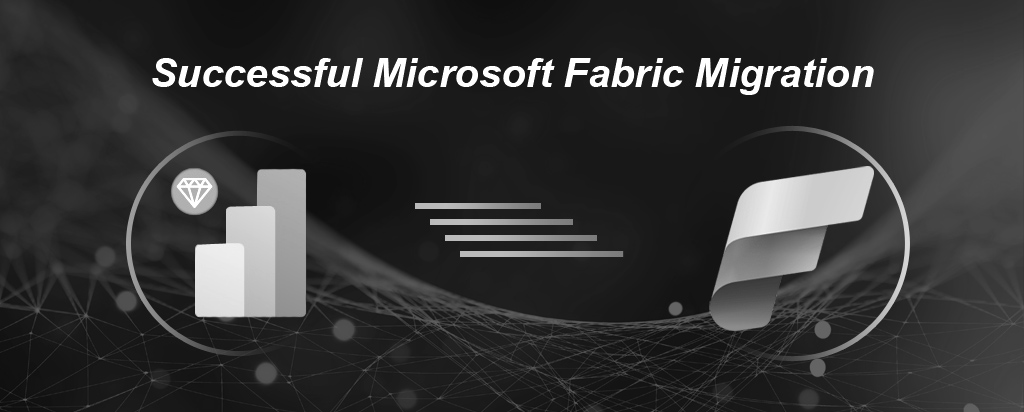5 Steps to a Successful Microsoft Fabric Migration
5 Steps to a Successful Microsoft Fabric Migration
Migrating from Power BI Premium to Microsoft Fabric is more than a technical “lift-and-shift.” It’s an opportunity to modernize your data strategy. However, a successful transition requires careful planning and execution. At Nihilent, we follow a proven five-step methodology to ensure your migration is seamless, secure, and value-driven.
Step 1: Assess and Plan
The foundation of a successful migration is a thorough understanding of your current environment.
-
What we do: We conduct a comprehensive discovery of your existing Power BI workspaces, reports, datasets, data sources, and dependencies. We analyze usage metrics to understand peak loads and performance requirements.
-
Why it’s crucial: This step identifies potential complexities, such as complex data models, non-standard data sources, or custom security configurations. A detailed plan prevents unexpected issues and downtime during the migration itself.
Step 2: Size and Select Your Fabric Capacity
Choosing the right F-SKU is critical for balancing performance and cost.
-
What we do: Using the data from the assessment phase, we model your workload requirements to recommend the optimal Fabric capacity (F-SKU). We help you understand the consumption-based model and how different workloads (BI vs. data engineering) impact Capacity Units (CUs).
-
Why it’s crucial: Under-provisioning leads to performance bottlenecks and user frustration, while over-provisioning results in unnecessary costs. Our expertise ensures you start with a right-sized capacity that aligns with your budget and business needs.
Step 3: Migrate and Validate
This is the core execution phase where workloads are moved to the new Fabric capacity.
-
What we do: We manage the technical process of re-assigning your Power BI workspaces from P-SKUs to the new F-SKU. We then conduct rigorous testing and validation to ensure all reports, dashboards, and data refreshes work as expected.
-
Why it’s crucial: A methodical approach with robust validation ensures data integrity and business continuity. We confirm that performance meets or exceeds previous benchmarks before moving to the final steps.
Step 4: Implement Governance and Security
Fabric’s unified nature requires a cohesive governance strategy.
-
What we do: We help you establish a robust governance and security framework within Fabric. This includes defining roles, managing access through workspaces, setting up data sensitivity labels, and configuring security for OneLake.
-
Why it’s crucial: In a unified platform, clear governance is essential to prevent data silos, ensure compliance, and protect sensitive information across all analytics workloads.
Step 5: Optimize and Empower Users
Your migration isn’t complete until your team is empowered to use the new platform effectively.
-
What we do: We provide user training on the new capabilities within Fabric. We also implement monitoring tools to track capacity usage, allowing for continuous optimization of performance and cost.
-
Why it’s crucial: Empowering users drives adoption and unlocks the true value of Fabric. Continuous optimization ensures you maintain a positive ROI on your investment long after the migration is complete.
Partnering with Nihilent ensures each of these steps is executed with precision, de-risking your migration and setting you up for long-term success.
Most Read
May 28, 2019
Driving Operational Excellence Through Design Thinking
February 11, 2020
The Art of Data Science
June 12, 2019
Financial Inclusion through Digital Diversification





